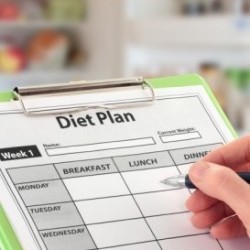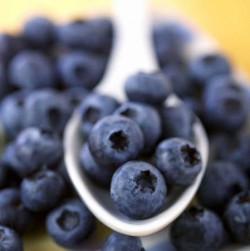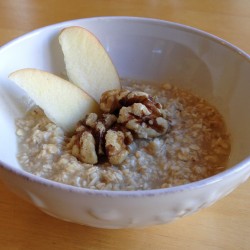By Elizabeth Klodas MD, FACC
As a cardiac care community, we have certainly become exceptionally adroit at managing heart disease – prescribing statins, treating hypertension, and implanting stents and defibrillators. But we do all this while failing to effectively address the underlying fundamental root cause of atherosclerosis – poor nutrition.
Of the seven modifiable risk factors for atherosclerotic cardiovascular disease – smoking, inactivity, hyperlipidemia, hypertension, diabetes/prediabetes, excess weight, and poor diet – five are nutrition related. So simply putting people on statins to normalize their lipid readings without fully addressing what they eat is therefore not a cure – it is only a masking of risk.
Paradoxically, this masking actually enables poor dietary patterns, perpetuating the underlying stimulus, creating a vicious cycle. Indeed, according to the National Health and Nutrition Examination Survey (NHANES), less than 1 percent of the US adult population consumes an ideal diet, while approximately half have ideal cholesterol values, BP readings and fasting glucose values.

All this healthcare dysfunction comes with a hefty price tag. The costs of treating cardiovascular disease are exploding. The American Heart Association projects that by 2020 we will be spending over $800 billion annually on heart disease care, and over $1.2 trillion annually by 2030. This is fundamentally unsustainable, highlighting the need for radical disruption.
The obvious disruptor is food.
However, despite having long understood the importance of diet and having spent millions on research, awareness and education campaigns around nutrition, we appear to be no further ahead. Clearly, the problem is not a lack of knowledge. The problem is a lack of effective intervention. And since nutrition dysfunction is so multifactorial and so widespread, it may be difficult to even contemplate where to begin. But we can all get started with a three-step process that fits completely into routine clinical practice.
The premise is simple – think of dietary dysfunction as a disease and think of food as prescriptive therapy.
Step One: Assess for Presence of Dietary Dysfunction
Most physicians don’t routinely take a detailed dietary survey. But patients eat at least three times per day – every day. How that activity could be playing into patients’ health and their treatment plans is therefore vital information.
Lack of time is often cited as the main impediment to undertaking dietary surveys. But it can frequently be  accomplished within a 1-2 minute exchange. “So what’s a typical breakfast for you? Lunch? Dinner?” – that information can be gleaned in under 30 seconds. But it’s not enough to have a patient report that they eat cereal for breakfast. “Which one” and “how much” are important follow-up questions, as it can be easy to miss the fact that two large bowls of Fruit Loops are the status quo each morning. Asking specifically about beverages, desserts and snacks is also vital – since patients don’t readily offer up that they eat a bag of chips or three cookies between meals.
accomplished within a 1-2 minute exchange. “So what’s a typical breakfast for you? Lunch? Dinner?” – that information can be gleaned in under 30 seconds. But it’s not enough to have a patient report that they eat cereal for breakfast. “Which one” and “how much” are important follow-up questions, as it can be easy to miss the fact that two large bowls of Fruit Loops are the status quo each morning. Asking specifically about beverages, desserts and snacks is also vital – since patients don’t readily offer up that they eat a bag of chips or three cookies between meals.
It may not be practical to do a full nutrition survey at a short follow-up visit. But annual/general physicals are the perfect opportunity to perform this critical review.
When dietary surveys are undertaken, the nearly universal finding is that most patients consume astonishing amounts of sodium and of simple, processed carbohydrates/sugars – but this is unlikely to be a big surprise. The other big pattern that emerges is that most people are also lacking in the four essential “building blocks” of cardiovascular health – fiber, omega 3 fatty acids, phytosterols and antioxidants – nutrients that have been extensively documented to possess lipid lowering properties as well as being protective against cardiovascular events. No statin can make up for any of that.
Step Two: Prescribe Food
This probably represents the biggest change to routine practice.
At present, most providers simply counsel patients to eat better or hand out rudimentary nutrition pamphlets.  Some take the extra step to referring the patient to a nutritionist. These interventions are often ineffective, because the advice provided is almost always impractical. Pamphlets and education generally steer patients towards home cooking, often utilizing unfamiliar ingredients, even though Americans no longer cook. People have markedly reduced their time in the kitchen since the 1970s, relying instead on processed convenience foods and restaurants.
Some take the extra step to referring the patient to a nutritionist. These interventions are often ineffective, because the advice provided is almost always impractical. Pamphlets and education generally steer patients towards home cooking, often utilizing unfamiliar ingredients, even though Americans no longer cook. People have markedly reduced their time in the kitchen since the 1970s, relying instead on processed convenience foods and restaurants.
Prescription medications, on the other hand, meet most people where they are. Medications are presented in pre-dosed formats, and come with precise instructions, ensuring ease of use and minimal impact on daily routines.
Although it might be tempting to simply place people on supplements, this is not the answer. We know from  multiple clinical trials that most supplements are largely ineffective. This is probably related to the context in which they are being delivered. Simply put, there is something magical about a blueberry. Taking the equivalent vitamin content of a bowl of blueberries, putting it in a pill form, and consuming it with a doughnut will not have the same health effects as actually eating the fruit. The best answer is to place people on food.
multiple clinical trials that most supplements are largely ineffective. This is probably related to the context in which they are being delivered. Simply put, there is something magical about a blueberry. Taking the equivalent vitamin content of a bowl of blueberries, putting it in a pill form, and consuming it with a doughnut will not have the same health effects as actually eating the fruit. The best answer is to place people on food.
Applying the prescription model to food creates a logical and practical approach to nutrition intervention. Patients can generally follow concrete advice. So why not “prescribe” drinking eight ounces of water with each meal and eating one apple QD, if that’s clinically appropriate? These interventions may seem insignificant, but they add up to big results over time. Substituting three glasses of water for three cans of regular soda could mean a 30 lb weight loss over the course of a year (all else being equal). An apple a day means the patient will take in an additional 1500 mg fiber per year.
As is employed for pharmaceuticals, every available tool should also be utilized to help improve compliance. Keeping advice simple and actionable is key. Grandiose attempts to overhaul entire eating plans are likely to fail for most. Just as one would consider it impractical to instruct a couch potato to get up and run a marathon, instructing a fast-food-aholic to eat only organic vegan meals would be equally quixotic. Patients are far more likely to have success with small sustainable changes. Most didn’t get to their eating patterns overnight and will need to gradually unwind their nutrition habits over time. The three glasses of water might actually be a huge change for some people.
Depending upon their insurance plan, some patients may have built in incentives that may steer the intervention, at least initially. Humana Vitality, for example, has offered points redeemable for merchandise when their enrollees purchase fresh produce at the grocery store. Some foods may even qualify for Flex/HSA reimbursement. For example, Step One Foods, a company I co-founded, offers such products. Others include Medifast and Nutrisystem D. Patients should be encouraged to check with their plans to find out which resources are available to them.
Step Three: Measure Impact
Nutrition interventions should be treated with the same import and scrutiny as pharmacologic interventions. It would be unthinkable to put someone on an antihypertensive medication and not see them back to assess blood pressure response. The same should be true of a dietary intervention. Especially since the results can be astonishing.
Patients who trade out even two nutritionally devoid foods for ones containing flax, chia, walnuts, almonds,  oat bran etc. can see lipid lowering effects commensurate with those seen with low or even medium-dose statin therapy within four to six weeks. That’s a game changer for a statin intolerant individual.
oat bran etc. can see lipid lowering effects commensurate with those seen with low or even medium-dose statin therapy within four to six weeks. That’s a game changer for a statin intolerant individual.
And even small, documented improvements can serve as “tipping points” for further dietary change, with the patient becoming far more receptive to additional suggested dietary modifications and subsequent re-assessments. Establishing the cause-and-effect relationship between nutrition and markers of health status elevates food as a real, credible therapeutic adjunct to care. This means that patients will stop seeing eating as just a passive, inconsequential activity.
Food is the cause of – and the solution to – the healthcare crisis. To overlook this elephant in the room is no longer an option. Every meal represents an opportunity for therapeutic intervention, and leveraging that opportunity could literally transform the entire healthcare landscape – not just cardiovascular care. Treating poor nutrition as a disease and applying the pharmaceutical model to food intervention is the model for success for providers and patients.
 Elizabeth Klodas MD, FACC is a practicing cardiologist and co-founder of Step One Foods, a company which develops and produces convenient foods specifically formulated to support the treatment of heart disease and its risk factors. The company works with physicians, health care organizations and employers to improve the nutrition status of patients. Dr. Klodas and Step One Foods are based in Minneapolis, Minnesota. For more information on StepOne Foods, link here.
Elizabeth Klodas MD, FACC is a practicing cardiologist and co-founder of Step One Foods, a company which develops and produces convenient foods specifically formulated to support the treatment of heart disease and its risk factors. The company works with physicians, health care organizations and employers to improve the nutrition status of patients. Dr. Klodas and Step One Foods are based in Minneapolis, Minnesota. For more information on StepOne Foods, link here.
Food: The Vital Adjunct to Cardiovascular Care
By Elizabeth Klodas MD, FACC
As a cardiac care community, we have certainly become exceptionally adroit at managing heart disease – prescribing statins, treating hypertension, and implanting stents and defibrillators. But we do all this while failing to effectively address the underlying fundamental root cause of atherosclerosis – poor nutrition.
Of the seven modifiable risk factors for atherosclerotic cardiovascular disease – smoking, inactivity, hyperlipidemia, hypertension, diabetes/prediabetes, excess weight, and poor diet – five are nutrition related. So simply putting people on statins to normalize their lipid readings without fully addressing what they eat is therefore not a cure – it is only a masking of risk.
Paradoxically, this masking actually enables poor dietary patterns, perpetuating the underlying stimulus, creating a vicious cycle. Indeed, according to the National Health and Nutrition Examination Survey (NHANES), less than 1 percent of the US adult population consumes an ideal diet, while approximately half have ideal cholesterol values, BP readings and fasting glucose values.
All this healthcare dysfunction comes with a hefty price tag. The costs of treating cardiovascular disease are exploding. The American Heart Association projects that by 2020 we will be spending over $800 billion annually on heart disease care, and over $1.2 trillion annually by 2030. This is fundamentally unsustainable, highlighting the need for radical disruption.
The obvious disruptor is food.
However, despite having long understood the importance of diet and having spent millions on research, awareness and education campaigns around nutrition, we appear to be no further ahead. Clearly, the problem is not a lack of knowledge. The problem is a lack of effective intervention. And since nutrition dysfunction is so multifactorial and so widespread, it may be difficult to even contemplate where to begin. But we can all get started with a three-step process that fits completely into routine clinical practice.
The premise is simple – think of dietary dysfunction as a disease and think of food as prescriptive therapy.
Step One: Assess for Presence of Dietary Dysfunction
Most physicians don’t routinely take a detailed dietary survey. But patients eat at least three times per day – every day. How that activity could be playing into patients’ health and their treatment plans is therefore vital information.
Lack of time is often cited as the main impediment to undertaking dietary surveys. But it can frequently be accomplished within a 1-2 minute exchange. “So what’s a typical breakfast for you? Lunch? Dinner?” – that information can be gleaned in under 30 seconds. But it’s not enough to have a patient report that they eat cereal for breakfast. “Which one” and “how much” are important follow-up questions, as it can be easy to miss the fact that two large bowls of Fruit Loops are the status quo each morning. Asking specifically about beverages, desserts and snacks is also vital – since patients don’t readily offer up that they eat a bag of chips or three cookies between meals.
accomplished within a 1-2 minute exchange. “So what’s a typical breakfast for you? Lunch? Dinner?” – that information can be gleaned in under 30 seconds. But it’s not enough to have a patient report that they eat cereal for breakfast. “Which one” and “how much” are important follow-up questions, as it can be easy to miss the fact that two large bowls of Fruit Loops are the status quo each morning. Asking specifically about beverages, desserts and snacks is also vital – since patients don’t readily offer up that they eat a bag of chips or three cookies between meals.
It may not be practical to do a full nutrition survey at a short follow-up visit. But annual/general physicals are the perfect opportunity to perform this critical review.
When dietary surveys are undertaken, the nearly universal finding is that most patients consume astonishing amounts of sodium and of simple, processed carbohydrates/sugars – but this is unlikely to be a big surprise. The other big pattern that emerges is that most people are also lacking in the four essential “building blocks” of cardiovascular health – fiber, omega 3 fatty acids, phytosterols and antioxidants – nutrients that have been extensively documented to possess lipid lowering properties as well as being protective against cardiovascular events. No statin can make up for any of that.
Step Two: Prescribe Food
This probably represents the biggest change to routine practice.
At present, most providers simply counsel patients to eat better or hand out rudimentary nutrition pamphlets. Some take the extra step to referring the patient to a nutritionist. These interventions are often ineffective, because the advice provided is almost always impractical. Pamphlets and education generally steer patients towards home cooking, often utilizing unfamiliar ingredients, even though Americans no longer cook. People have markedly reduced their time in the kitchen since the 1970s, relying instead on processed convenience foods and restaurants.
Some take the extra step to referring the patient to a nutritionist. These interventions are often ineffective, because the advice provided is almost always impractical. Pamphlets and education generally steer patients towards home cooking, often utilizing unfamiliar ingredients, even though Americans no longer cook. People have markedly reduced their time in the kitchen since the 1970s, relying instead on processed convenience foods and restaurants.
Prescription medications, on the other hand, meet most people where they are. Medications are presented in pre-dosed formats, and come with precise instructions, ensuring ease of use and minimal impact on daily routines.
Although it might be tempting to simply place people on supplements, this is not the answer. We know from multiple clinical trials that most supplements are largely ineffective. This is probably related to the context in which they are being delivered. Simply put, there is something magical about a blueberry. Taking the equivalent vitamin content of a bowl of blueberries, putting it in a pill form, and consuming it with a doughnut will not have the same health effects as actually eating the fruit. The best answer is to place people on food.
multiple clinical trials that most supplements are largely ineffective. This is probably related to the context in which they are being delivered. Simply put, there is something magical about a blueberry. Taking the equivalent vitamin content of a bowl of blueberries, putting it in a pill form, and consuming it with a doughnut will not have the same health effects as actually eating the fruit. The best answer is to place people on food.
Applying the prescription model to food creates a logical and practical approach to nutrition intervention. Patients can generally follow concrete advice. So why not “prescribe” drinking eight ounces of water with each meal and eating one apple QD, if that’s clinically appropriate? These interventions may seem insignificant, but they add up to big results over time. Substituting three glasses of water for three cans of regular soda could mean a 30 lb weight loss over the course of a year (all else being equal). An apple a day means the patient will take in an additional 1500 mg fiber per year.
As is employed for pharmaceuticals, every available tool should also be utilized to help improve compliance. Keeping advice simple and actionable is key. Grandiose attempts to overhaul entire eating plans are likely to fail for most. Just as one would consider it impractical to instruct a couch potato to get up and run a marathon, instructing a fast-food-aholic to eat only organic vegan meals would be equally quixotic. Patients are far more likely to have success with small sustainable changes. Most didn’t get to their eating patterns overnight and will need to gradually unwind their nutrition habits over time. The three glasses of water might actually be a huge change for some people.
Depending upon their insurance plan, some patients may have built in incentives that may steer the intervention, at least initially. Humana Vitality, for example, has offered points redeemable for merchandise when their enrollees purchase fresh produce at the grocery store. Some foods may even qualify for Flex/HSA reimbursement. For example, Step One Foods, a company I co-founded, offers such products. Others include Medifast and Nutrisystem D. Patients should be encouraged to check with their plans to find out which resources are available to them.
Step Three: Measure Impact
Nutrition interventions should be treated with the same import and scrutiny as pharmacologic interventions. It would be unthinkable to put someone on an antihypertensive medication and not see them back to assess blood pressure response. The same should be true of a dietary intervention. Especially since the results can be astonishing.
Patients who trade out even two nutritionally devoid foods for ones containing flax, chia, walnuts, almonds, oat bran etc. can see lipid lowering effects commensurate with those seen with low or even medium-dose statin therapy within four to six weeks. That’s a game changer for a statin intolerant individual.
oat bran etc. can see lipid lowering effects commensurate with those seen with low or even medium-dose statin therapy within four to six weeks. That’s a game changer for a statin intolerant individual.
And even small, documented improvements can serve as “tipping points” for further dietary change, with the patient becoming far more receptive to additional suggested dietary modifications and subsequent re-assessments. Establishing the cause-and-effect relationship between nutrition and markers of health status elevates food as a real, credible therapeutic adjunct to care. This means that patients will stop seeing eating as just a passive, inconsequential activity.
Food is the cause of – and the solution to – the healthcare crisis. To overlook this elephant in the room is no longer an option. Every meal represents an opportunity for therapeutic intervention, and leveraging that opportunity could literally transform the entire healthcare landscape – not just cardiovascular care. Treating poor nutrition as a disease and applying the pharmaceutical model to food intervention is the model for success for providers and patients.
Related Articles
Maintaining Mitochondria: Why it’s Crucial for Women’s Wellness
Read MoreObstacles to Vitamin D Sufficiency- Why It Can Be Hard to Achieve
Read MoreCreatine and Cognition: Is There Benefit for Alzheimer’s Disease?
Read More